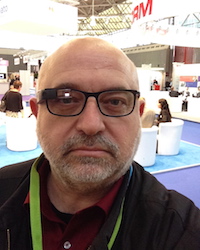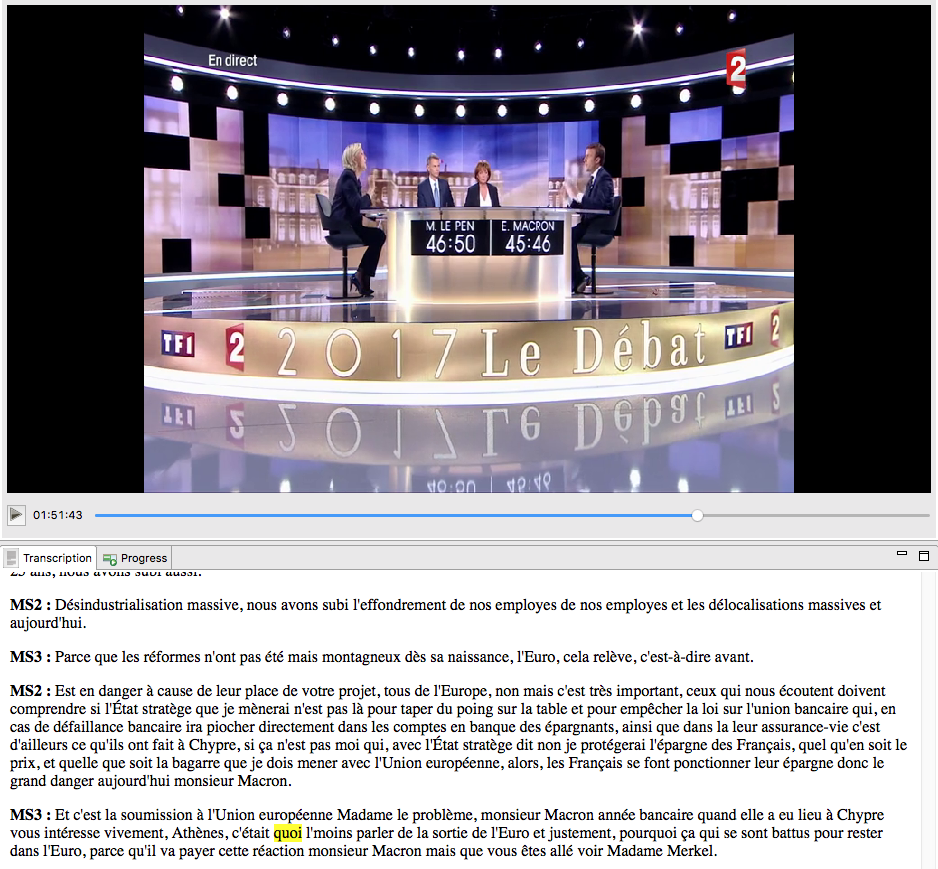AFP Medialab: information verification and user experience at the core of newsroom innovation
AFP Medialab is a small team of journalists and engineers developing new tools for the newsroom, like content verification or speech-to-text, and building innovative user experiences to valorise AFP’s content through interactive video or automated geolocalised news displays.
Agence France Presse (AFP) is a global news agency delivering fast, in-depth coverage of the events shaping our world from wars and conflicts to politics, sports, entertainment and the latest breakthroughs in health, science and technology. Founded in 1944 and headquartered in Paris, it is one of the top three news agency in the world. Its 1575 journalists (out of 2326 employees) produce each day some 5000 dispatches, 3000 pictures, 200 videos and 100 graphics and videographics.
AFP Medialab R&D is what remains from a former Multimedia development division created at the end of 1990’s . At the time, the priority was to develop multimedia and Internet production within the company. Nowadays, although priorities and general direction are fixed by an innovation committee at company level, the lab focuses on creating new user experiences around AFP’s content, in trying to solve “real life” problems for journalists developing news tools.
“In information verification, our approach is based on design thinking methodology to keep the innovation user-centred. We observe how users are working and we try to understand where we can help them being more efficient, solve bottlenecks and decrease time-consuming tasks,” says Denis Teyssou, Editorial Manager at the AFP Medialab.
Solutions for the newsroom
“One of the most interesting things that has happened in information and communication in the last 15 years is the rise of user generated content (photos, videos etc.),” says Teyssou. “This also comes with the difficulty of verifying this content created by the audience.”
In an attempt to solve this challenge, they are currently involved in a Horizon 2020 European-funded project named InVID which focuses on digital files as well as contextual and user rights verifications of user generated video on social networks. Other participants include the Austrian Press Agency technical subsidiary APA-IT and German broadcaster Deutsche Welle.
AFP Medialab has already completed eight successful research and innovation projects and have developed some groundbreaking prototypes like EarthNews (a news mashup on a NASA open source framework) or AFP4W (a platform to query events and build on-the-fly timelines, mashups, ebooks) in a previous European project. After having completed a research project and once the technology is mature, they will often try to put it into practice in order to create useful solutions for the newsroom. The idea, according to Denis Teyssou, is to go from invention to innovation instead of remaining in the invention phase.
This type of thinking led for example to the AFP Transcriber software, which is a collaboration with a spin-off of the research institute CNRS: Vocapia. AFP journalists can now use it to transcribe their videos, interviews, pressers, by using this application which extract an mp3 file send it to Vocapia and retrieves back the text transcription which is regularly enhanced through the detection of neologism and new named entities (proper names) in news feeds. And it works in some 20 languages, while the main limitation is the quality of the audio recording.
“Transcribing interviews is seen as one of the most tedious tasks by journalists. If you come back from an interview of 1 hour, you can now get back the transcription in 4 or 5 minutes. Also, the transcription is completely synchronised with the video, so you can click on a word and the video or audio will start to play there,” explains Denis Teyssou.
The application is currently used by AFP’s video and political departments and will probably be used as a form of video archiving for the newsroom at a later stage.
User-driven innovation and design thinking methodology
Keeping the user always in mind, the lab’s activities are focused on experimenting with new technologies and trying to find out innovative ideas in products, processes and services. However, it is not always easy to receive user-feedback, because it’s an iterative process that demands time and the users are mostly journalists who are always working. Although it’s easier to find users within a large newsroom like the one at AFP. Especially since the Medialab is located in the newsroom, in between the video and infographics departments.
“We managed to organise when needed specific sessions with dozens of AFP journalists, for testing and demos during a couple of hours. Although they have little time, their responses are good. Sometimes more tech-savvy people are learning more quickly, while other need more time to figure it out. But when it really solves something, when they see the benefit, then people are really keen to use it, as is the case for the AFP Transcriber.”
Staffed by two journalists and two engineers, the Medialab has also integrated user feedback into its interdisciplinary team.
Innovating within AFP
Although reporting regularly on their achievements to the innovation internal committee, the Medialab is an independent-minded entity within AFP and this fits perfectly with the spirit of a research and development lab. Their work is also largely supported by public funding either on a European level (the Horizon 2020 framework), as is the case with InVID, or on a National level (National Research Agency or the Ministry of Economy). This is the case with the ASRAEL project, which is about extracting data on media events from AFP wires and the web.
One of the main advantage of being part of an international news agency like AFP is the massive and multilingual production of content. This mine of texts, videos, infographics and images is accessible to the lab and can be used to build something quite quickly. The fact that AFP has links with the French state and the central position of AFP in France and in the world makes cooperation with universities and laboratories easier as well: “AFP content is attractive for the research community. If you’re setting up a project and you can have access to our content, that gives you a lot of material to work with.”
With new forms of narratives and storytelling appearing just around the corner (interactive, immersive, 360° video, virtual and augmented reality etc.) they are convinced that research should be centred on user-experience even more so than before. “We know that the industry is facing problems and we know that there are some external opportunities like collaborating with startups or joining funded research programmes, that can help us to find solutions to tackle these challenges.”
CONTACT POINT

Denis Teyssou, Editorial Manager, AFP Medialab
Web: https://www.afp.com/en/agency/MediaLab/
Twitter: @dteyssou

